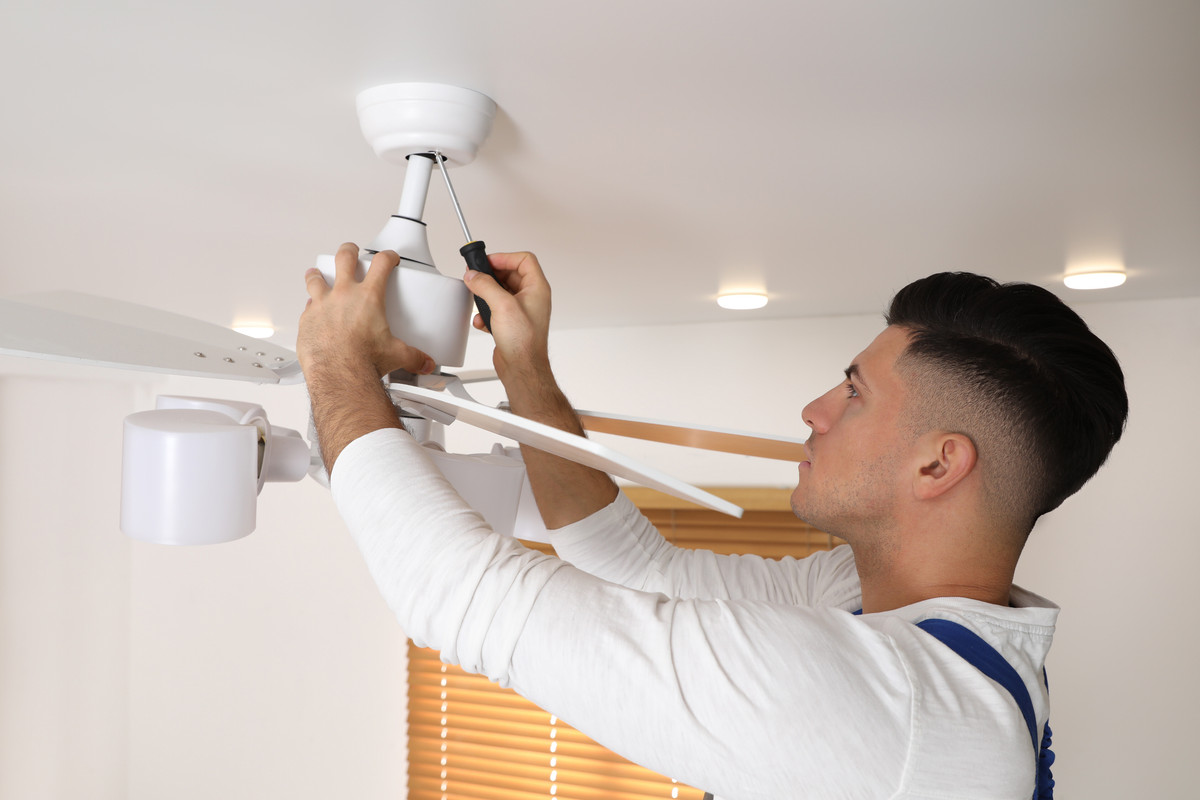Ceiling Fan Repair – How to Fix a Squeaky Fan
by siteadmin

When your ceiling fan isn't working right, you may need to make some Ceiling Fan Repairs. It's possible to fix a squeaky fan, tripped circuit breaker, or stuck fan chain. Here are a few tips. Follow these steps for an effective repair:
1. Test the electrical wiring. Check the wall switch and circuit breaker first to be sure that they are functioning properly.
2. Use a voltage tester to make sure that there aren't any loose wires or plugs.
The first step in fixing a squeaky ceiling fan is to determine the cause of the problem. Usually, a squeaky fan is caused by something that is rubbing against the fan's blade or inside the motor casing. Cleaning these parts will help to reduce the sound. For the blade, you can use canned air or WD-40.
Another option to fix a squeaky ceiling fan is to lubricate the motor and bearings. However, be aware that WD-40 is not a universal solution and may not work. You can also contact a professional to fix the fan. In some cases, replacing the fan may be cheaper and easier.
If you cannot find the cause of the squeaky ceiling fan, you can contact an electrician for assistance. A professional will be able to inspect your fan and provide you with an estimate. This way, you can compare the cost of the inspection with the price of a replacement. Before making the final decision, make sure to ask the electrician if they provide any warranties or guarantees for their products.
Often, the cause of a squeaky ceiling fan is as simple as the bearings being out of balance. You can try to balance the fan's blades by placing a small weight on the center of each blade. Make sure that the weight is attached firmly to the blade.
Another cause of a squeaky ceiling fan is a loose blade bracket. This is the piece that connects the blade to the motor housing. This is fastened to the motor unit with screws or bolts. If the brackets are loose, it can cause the blades to drag against the motor housing cover and cause noise.
In order to fix a broken flywheel on the ceiling fan, you must first disconnect the motor from the ceiling fan. Ideally, you should disconnect the wires in such a way that you can reconnect them easily. If possible, you should note down the location of the motor.
Replacement flywheels are available for most ceiling fans, and they are relatively inexpensive. To find the right flywheel for your ceiling fan, you need to know its make and model. Once you have that information, you need to measure the broken flywheel. There are three dimensions that are relevant when selecting a replacement: outer diameter, inner diameter, and spacing between brackets. Also, you should note if the flywheel is made of plastic or rubber. Before you begin replacing the flywheel, make sure you turn off the power to ensure that there is no electricity to the fan.
If you cannot find the correct flywheel, you can purchase a replacement one from the ceiling fan manufacturer. However, you should remember that it is cheaper to replace the flywheel than to purchase a new fan altogether. The flywheel is made of rubber and can become cracked or warped with time. When this happens, the motor will continue to run, but the flywheel will no longer be functional. To avoid any further problems, it is best to replace the flywheel of your ceiling fan rather than replace the entire ceiling fan.
Broken flywheels are a common reason why a ceiling fan may not spin. The rubber flywheel attached to the motor becomes brittle and breaks easily, so it is best to have it replaced by a professional. Fortunately, replacement flywheels are relatively inexpensive and are available for most fan models.
When your ceiling fan isn't working right, you may need to make some Ceiling Fan Repairs. It's possible to fix a squeaky fan, tripped circuit breaker, or stuck fan chain. Here are a few tips. Follow these steps for an effective repair: 1. Test the electrical wiring. Check the wall switch and circuit breaker first…
Recent Posts
- Best Electrician Huntsville: Your Trusted 24/7 Electrician in Huntsville, AL
- Abilene Electricians: Setting the Standard for Excellence in Electrical Services
- Harnessing the Sun: The Rise of Solar Companies in El Paso
- P2 Electrical Contracting LLC Revolutionizes Electrical Solutions
- Best Electrician Huntsville Continues to Shine
